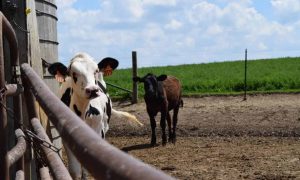
GREEN BAY, Wis. — Today, Edge Dairy Farmer Cooperative, one of the largest dairy co-ops in the country, applauded the work of U.S. trade officials in making the case that Canada is unfairly limiting export opportunities for America’s dairy farmers and processors.
A dispute settlement panel created last year to investigate Canada’s allocation of its tariff-rate quotas (TRQs) for dairy products under the U.S.-Mexico-Canada Agreement (USMCA) released findings that show Canada has not fulfilled its commitments.
Statement from Edge President Brody Stapel:
“Edge is thankful for the persistent efforts of the Office of the U.S. Trade Representative in defending the USMCA’s provisions and ensuring our dairy farmers see the full benefits of the agreement. When NAFTA was renegotiated and the USMCA was implemented, we were hopeful the new agreement would bring opportunities to our dairy farmer members, but that is only possible if both sides play by the rules. We are pleased to see that dispute settlement mechanisms put in place through the agreement are working, and hope that our trusted trading partner and neighbor will right the ship and come into compliance.”
Background:
Under the USMCA, U.S. dairy producers were granted increased market access to Canada by way of preferential tariff rates for in-quota quantities of certain products. Less than a year after implementation of the agreement, the Biden administration requested a dispute settlement panel be established to consider Canada’s failure to comply with the dairy TRQ provisions.
The panel determined that Canada’s implementation of the TRQs restricted access of U.S. dairy products by setting aside quotas specifically for Canadian processors. Per the findings of the report, Canada must now come into compliance with its dairy TRQ obligations within the next month.
Document: Dispute settlement panel report
























